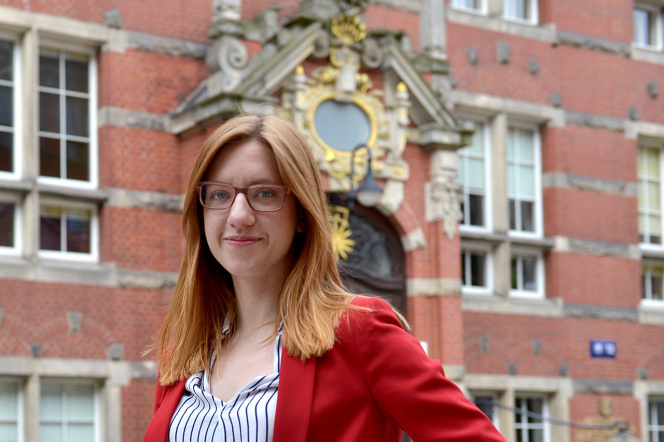Date added: 2021-04-26
Artificial intelligence in female hands

Already during her engineering studies, she knew that she wanted to associate her scientific work with social issues. The subject of her engineering thesis was the diagnosis of skin nevi. In this way, an algorithm and an application were created, supported by artificial intelligence, which can be installed on an ordinary computer. The idea turned out to be innovative, and the engineering work was awarded in the "Innovative Young" competition organized by the PIAP Industrial Institute for Automation and Measurements.
The artificial intelligence algorithm used in the application was improved by the young researcher during her second-cycle studies - she improved the application and expanded the database, presenting promising results in her master's thesis, which was also awarded in the "Innovative Youth" competition and in the competition for the Prof. Romuald Szczęsny’s prize.
During her doctoral studies, Agnieszka Mikołajczyk focused on the so-called "deep learning". The aim of this research is the most effective development of neural networks in algorithms. A properly trained network can associate the acquired knowledge and demonstrate the expected results in the analysis of the provided data.
– Initially, I started working on data augmentation methods -says the doctoral student- that is, to put it in simple terms, artificially increasing their quantity. Medical data, which is sensitive data, is always difficult to obtain, especially if we are seeking data from sick patients. Thanks to the photorealistic style transfer method, I obtained 120,000 new photos of skin lesions. Deep learning, which is a subcategory of machine learning, is about creating and training neural networks in such a way that they generate the desired predictions on their own, based on the available data. In this case, on the basis of photos of skin lesions, they were able to recognize whether the nevus was malignant or benign.
However, training the AI algorithm is not easy, as it can take into account such artifacts that humans do not even pay attention to. The key to such training of neural networks is the reliability of the data, undisturbed by any tags that the algorithm may misinterpret. Data bias are the subject of research by the PhD student in a project financed by the Preludium grant from the National Science Center.
Agnieszka Mikołajczyk also eagerly uses her knowledge in other pro-social projects. She works, among others in the non-profit organization Women in Machine Learning & Data Science (WiMLDS)
– The organization aims to support and promote women in the field of artificial intelligence and data science. Together with two friends from WiMLDS, we have created an educational project "Detect Waste in Pomerania", which is a response to the problem of environmental pollution.
The aim of the "Detect Waste in Pomerania" initiative is to popularize science, the less waste approach, and above all, to educate and support women in their career development in the field of artificial intelligence. Nine participants with experience in Artificial Intelligence and five mentors - experienced machine learning specialists were involved in the project. The project started at the end of October 2020 and ended five months later in March 2021. Its participants are working on creating an artificial intelligence algorithm for the detection of waste (mainly plastic) in the natural environment.
The created algorithm is a pilot solution that in the future may improve, e.g. automating waste recycling, environmental monitoring (automatic search for illegal landfills and automated measurement of the level of environmental pollution), and even minimizing the costs of keeping the city clean.

